| [1] |
沈珠江. 理论土力学[M]. 北京: 中国水利水电出版社, 2000.
(SHEN Zhu-jiang.Theoretical soil mechanics[M]. Beijing: China Water and Power Press, 2000. (in Chinese))
|
| [2] |
沈珠江. 现代土力学的基本问题[J]. 力学与实践, 1998, 20(6): 1-6.
(SHEN Zhu-jiang.Fundamental problems in the modern soil mechanics[J]. Mechanics in Engineering, 1998, 20(6): 1-6. (in Chinese))
|
| [3] |
ROSCOE K H, SCHOFIELD A N, THURAIRAJAH A.Yielding of clays in states wetter than critical[J]. Géotechnique, 1963, 13(3): 211-240.
|
| [4] |
DUNCAN J M, CHANG C Y.Nonlinear analysis of stress and strain in soils[J]. Journal of Soil Mechanics and Foundations Division, 1970, 96(SM5): 1629-1653.
|
| [5] |
MITCHELL J K.Fundamentals of soil behaviour[M]. New York : Wiley, 1976.
|
| [6] |
CUNDALL P A, STRACK O D L. A discrete numerical model for granular assemblies[J]. Géotechnique, 1979, 29(1): 47-65.
|
| [7] |
CHANG C S, MA L.A micromechanical-based micropolar theory for deformation of granular solids[J]. International Journal of Solids and Structures, 1991, 28(1): 67-86.
|
| [8] |
BARDET J P.Observations on the effects of particle rotations on the failure of idealized granular materials[J]. Mechanics of Materials, 1994, 18(2): 159-182.
|
| [9] |
THORNTON C.Numerical simulations of deviatoric shear deformation of granular media[J]. Géotechnique, 2000, 50(1): 43-53.
|
| [10] |
JIANG M J, HARRIS D, YU H S.Kinematic models for non-coaxial granular materials: Part I theory[J]. International Journal for Numerical and Analytical Methods in Geomechanics, 2005, 29(7): 643-661.
|
| [11] |
JIANG M J, LEROUEIL S, KONRAD J M.Insight into shear strength functions of unsaturated granulates by DEM analyses[J]. Computers and Geotechnics, 2004, 31(6): 473-489.
|
| [12] |
JIANG M J, YU H S, HARRIS D.A novel discrete model for granular material incorporating rolling resistance[J]. Computers and Geotechnics, 2005, 32(5): 340-357.
|
| [13] |
JIANG M J, YU H S, HARRIS D.Bond rolling resistance and its effect on yielding of bonded granulates by DEM analyses[J]. International Journal for Numerical and Analytical Methods in Geomechanics, 2006, 30(8): 723-761.
|
| [14] |
SHI G H.Discontinuous deformation analysis-a new numerical model for the statics and dynamics of block systems [D]. Berkeley: University of California, 1988.
|
| [15] |
ALDER B J, WAINWRIGHT T E.Phase transition for a hard sphere system[J]. Journal of Chemical Physics, 1957, 27(5): 1208-1209.
|
| [16] |
SANDEEP C S, HE H, SENETAKIS K.An experimental micromechanical study of sand grain contacts behavior from different geological environments[J]. Engineering Geology, 2018, 246: 176-186.
|
| [17] |
赵古田. 固液界面双电层结构的理论与实验研究[D]. 南京: 东南大学, 2014.
(ZHAO Gu-tian.Theoretical and experimental study on electric double layer structure near solid-liquid interface [D]. Nanjing: Southeast University, 2014. (in Chinese))
|
| [18] |
JIANG M J, SUN Y G, LI L Q, et al.Contact behavior of idealized granules bonded in two different interparticle distances: an experimental investigation[J]. Mechanics of Materials, 2012, 55(14): 1-15.
|
| [19] |
蒋明镜, 金树楼, 刘蔚, 等. 粒间胶结接触力学特性的三维试验研究[J]. 岩土力学, 2015, 36(增刊1): 9-13.
(JIANG Ming-jing, JIN Shu-lou, LIU Wei, et al.Three-dimensional experimental study of mechanical behaviors of bonded granules[J]. Rock and Soil Mechanics, 2015, 36(S1): 9-13. (in Chinese))
|
| [20] |
ZHAO B D, WANG J F, COOP M R, et al.An investigation of single sand particle fracture using X-ray micro-tomography[J]. Géotechnique, 2015, 65(8): 625-641.
|
| [21] |
MOLLON G, ZHAO J D.Generating realistic 3d sand particles using fourier descriptors[J]. Granular Matter, 2013, 15(1): 95-108.
|
| [22] |
LI X, YANG D, YU H S.Macro deformation and micro structure of 3D granular assemblies subjected to rotation of principal stress axes[J]. Granular Matter, 2016, 18(3): 53.
|
| [23] |
JIANG M J, SHEN Z F, WANG J F.A novel three-dimensional contact model for granulates incorporating rolling and twisting resistances[J]. Computers and Geotechnics, 2015, 65: 147-163.
|
| [24] |
FENG Y T, OWEN D R J. Discrete element modelling of large scale particle systems: I exact scaling laws[J]. Computational Particle Mechanics, 2014, 1(2): 159-168.
|
| [25] |
JIANG M J, KONRAD J M, LEROUEIL S.An efficient technique for generating homogeneous specimens for DEM studies[J]. Computers and Geotechnics, 2003, 30(5): 579-597.
|
| [26] |
KATSUKI S, ISHIKAWA N, OHIRA Y, et al.Shear strength of rod material[J]. Journal of Civil Engineering, 1989, 410(8): 1-12. (in Japanese)
|
| [27] |
ROTHENBURG L, BATHURST R J.Micromechanical features of granular assemblies with planar elliptical particles[J]. Géotechnique, 1992, 42(1): 79-95.
|
| [28] |
CIANTIA M O, BOSCHI K, SHIRE T, et al.Numerical techniques for fast generation of large discrete-element models[J]. Engineering and Computational Mechanics, 2018: 1-15.
|
| [29] |
CUNDALL P A.Computer simulations of dense sphere assemblies[J]. Studies in Applied Mechanics, 1988, 20: 113-123.
|
| [30] |
THORNTON C, CUMMINS S J, CLEARY P W.An investigation of the comparative behaviour of alternative contact force models during inelastic collisions[J]. Powder Technology, 2013, 233: 30-46.
|
| [31] |
JIANG M J, LEROUEIL S, ZHU H H, et al.Two-dimensional discrete element theory for rough particles[J]. International Journal of Geomechanics, 2009, 9(1): 20-33.
|
| [32] |
LI T, JIANG M J, THORNTON C.Three-dimensional discrete element analysis of triaxial tests and wetting tests on unsaturated compacted silt[J]. Computers and Geotechnics, 2018, 97: 90-102.
|
| [33] |
JIANG M J, SHEN Z F, THORNTON C.Microscopic contact model of lunar regolith for high efficiency discrete element analyses[J]. Computers and Geotechnics, 2013, 54: 104-116.
|
| [34] |
LU N, ANDERSON M T, LIKOS W J, et al.A discrete element model for kaolinite aggregate formation during sedimentation[J]. International Journal for Numerical and Analytical Methods in Geomechanics, 2008, 32(8): 965-980.
|
| [35] |
POTYONDY D O, CUNDALL P A.A bonded-particle model for rock[J]. International Journal of Rock Mechanics and Mining Sciences, 2004, 41(8): 1329-1364.
|
| [36] |
POTYONDY D O.Parallel-bond refinements to match macroproperties of hard rock[C]// Proceedings of Second Internationl FLAC/DEM Symposium. Melbourne, 2011.
|
| [37] |
DING X, ZHANG L.A new contact model to improve the simulated ratio of unconfined compressive strength to tensile strength in bonded particle models[J]. International Journal of Rock Mechanics and Mining Sciences, 2014, 69: 111-119.
|
| [38] |
MA Y F, HUANG H Y.A displacement-softening contact model for discrete element modeling of quasi-brittle materials[J]. International Journal of Rock Mechanics and Mining Sciences, 2018, 104: 9-19.
|
| [39] |
BRENDEL L, TÖRÖK J, KIRSCH R, et al. A contact model for the yielding of caked granular materials[J]. Granular Matter, 2011, 13(6): 777-786.
|
| [40] |
BROWN N J, CHEN J F, OOI J Y.A bond model for DEM simulation of cementitious materials and deformable structures[J]. Granular Matter, 2014, 16(3): 299-311.
|
| [41] |
JIANG M J, ZHANG N, CUI L, et al.A size-dependent bond failure criterion for cemented granules based on experimental studies[J]. Computers and Geotechnics, 2015, 69: 182-198.
|
| [42] |
JIANG M J, LIU F, ZHOU Y P.A bond failure criterion for DEM simulations of cemented geomaterials considering variable bond thickness[J]. International Journal for Numerical and Analytical Methods in Geomechanics, 2014, 38(18): 1871-1897.
|
| [43] |
SHEN Z F, JIANG M J, WAN R.Numerical study of inter-particle bond failure by 3D discrete element method[J]. International Journal for Numerical and Analytical Methods in Geomechanics, 2016, 40(4): 523-545.
|
| [44] |
WANG H N, GONG H, LIU F, et al.Size-dependent mechanical behavior of an intergranular bond revealed by an analytical model[J]. Computers and Geotechnics, 2017, 89: 153-167.
|
| [45] |
JIANG M J, CHEN H, CROSTA G B.Numerical modeling of rock mechanical behavior and fracture propagation by a new bond contact model[J]. International Journal of Rock Mechanics and Mining Sciences, 2015, 78: 175-189.
|
| [46] |
JIANG M J, JIANG T, CROSTA G B, et al.Modeling failure of jointed rock slope with two main joint sets using a novel DEM bond contact model[J]. Engineering Geology, 2015, 193: 79-96.
|
| [47] |
SHEN Z F, JIANG M J, THORNTON C.DEM simulation of bonded granular material: Part I contact model and application to cemented sand[J]. Computers and Geotechnics, 2016, 75: 192-209.
|
| [48] |
李涛, 蒋明镜, 张鹏. 非饱和结构性黄土侧限压缩和湿陷试验三维离散元分析[J]. 岩土工程学报, 2018, 40(增刊1): 39-44.
(LI Tao, JIANG Ming-jing, ZHANG Peng.DEM analyses of oedometer and wetting tests on unsaturated structured loess[J]. Chinese Journal of Geotechnical Engineering, 2018, 40(S1): 39-44. (in Chinese)).
|
| [49] |
TSUJI Y, KAWAGUCHI T, TANAKA T.Discrete particle simulation of two-dimensional fluidized bed[J]. Powder Technology, 1993, 77(1): 79-87.
|
| [50] |
EL SHAMY U, ZEGHAL M.Coupled continuum-discrete model for saturated granular soils[J]. Journal of Engineering Mechanics, 2005, 131(4): 413-426.
|
| [51] |
POTAPOV A V, HUNT M L, CAMPBELL C S.Liquid-solid flows using smoothed particle hydrodynamics and the discrete element method[J]. Powder Technology, 2001, 116(2): 204-213.
|
| [52] |
TAN H, CHEN S.A hybrid DEM-SPH model for deformable landslide and its generated surge waves[J]. Advances in Water Resources, 2017, 108: 256-276.
|
| [53] |
COOK B K, NOBLE D R, PREECE D S, et al.Direct simulation of particle-laden fluids[C]// Pacific Rocks. Rotterdam, 2000: 279-286.
|
| [54] |
TRAN D K, PRIME N, FROIIO F, et al.Numerical modelling of backward front propagation in piping erosion by DEM-LBM coupling[J]. European Journal of Environmental and Civil Engineering, 2017, 21(7/8): 960-987.
|
| [55] |
罗勇, 龚晓南, 吴瑞潜. 颗粒流模拟和流体与颗粒相互作用分析[J]. 浙江大学学报(工学版), 2007, 41(11): 1932-1936.
(LUO Yong, GONG Xiao-nan, WU Rui-qian.Analysis and simulation of fluid-particles interaction with particle flow code[J]. Journal of Zhejiang University(Engineering Science), 2007, 41(11): 1932-1936. (in Chinese))
|
| [56] |
ZEGHAL M, EL SHAMY U.Liquefaction of saturated loose and cemented granular soils[J]. Powder Technology, 2008, 184(2): 254-265.
|
| [57] |
ZHAO J D, SHAN T.Coupled CFD-DEM simulation of fluid-particle interaction in geomechanics[J]. Powder Technology, 2013, 239: 248-258.
|
| [58] |
王胤, 艾军, 杨庆. 考虑粒间滚动阻力的CFD-DEM流-固耦合数值模拟方法[J]. 岩土力学, 2017, 38(6): 1771-1780.
(WANG Yi, AI Jun, YANG Qing.A CFD-DEM coupled method incorporating soil inter-particle rolling resistance[J]. Rock and Soil Mechanics, 2017, 38(6): 1771-1780. (in Chinese))
|
| [59] |
ZHAO T, DAI F, XU N W.Coupled DEM-CFD investigation on the formation of landslide dams in narrow rivers[J]. Landslides, 2017, 14(1): 189-201.
|
| [60] |
CHENG K, WANG Y, YANG Q.A semi-resolved CFD-DEM model for seepage-induced fine particle migration in gap-graded soils[J]. Computers and Geotechnics, 2018, 100: 30-51.
|
| [61] |
蒋明镜, 张望城. 一种考虑流体状态方程的土体CFD-DEM耦合数值方法[J]. 岩土工程学报, 2014, 36(5): 793-801.
(JIANG Ming-jing, ZHANG Wang-cheng.Coupled CFD-DEM method for soils incorporating equation of state for liquid[J]. Chinese Journal of Geotechnical Engineering, 2014, 36(5): 793-801. (in Chinese)).
|
| [62] |
O'SULLIVAN C.Particulate discrete element modelling: a geomechanics perspective[M]. London: CRC Press, 2011.
|
| [63] |
沈亚男. 净砂管涌理论的三维CFD-DEM耦合分析[D]. 南京: 河海大学, 2017.
(SHEN Ya-nan.Three dimensional CFD-DEM coupling analysis of pure sand’s piping theory [D]. Nanjing: Hohai University, 2017. (in Chinese))
|
| [64] |
谭亚飞鸥. 考虑循环荷载的三维微观胶结模型及微生物处理砂土循环三轴 CFD-DEM 耦合模拟[D]. 上海: 上海理工大学, 2018.
(TAN Ya-fei-ou. A novel three-dimensional bonded contact model incorporating the effect of cyclic loads and CFD-DEM simulation of microbially treated sands under undrained consolidated cyclic triaxial tests[D]. Shanghai: University of Shanghai for Science and Technology, 2018. (in Chinese))
|
| [65] |
WANNE T S, YOUNG R P.Bonded-particle modeling of thermally fractured granite[J]. International Journal of Rock Mechanics and Mining Sciences, 2008, 45(5): 789-799.
|
| [66] |
XIA M, ZHAO C, HOBBS B E.Particle simulation of thermally-induced rock damage with consideration of temperature-dependent elastic modulus and strength[J]. Computers and Geotechnics, 2014, 55: 461-473.
|
| [67] |
TOMAC I, GUTIERREZ M.Formulation and implementation of coupled forced heat convection and heat conduction in DEM[J]. Acta Geotechnica, 2015, 10(4): 421-433.
|
| [68] |
朱方园. 深海能源土温-压-力微观胶结模型及水合物升温分解锚固桩承载特性离散元分析[D]. 上海: 同济大学, 2013.
(ZHU Fang-yuan.A thermal-hydro-mechanical bond contact model for methane hydrate bearing sediments and DEM investigating the uplift capacity of their embedded pile after thermal dissociation of hydrate[D]. Shanghai: Tongji University, 2013. (in Chinese))
|
| [69] |
FELIPPA C A, PARK K C.Staggered transient analysis procedures for coupled mechanical systems: Formulation[J]. Computer Methods in Applied Mechanics and Engineering, 1980, 24(1): 61-111.
|
| [70] |
TU F, LING D, HU C, et al.DEM-FEM analysis of soil failure process via the separate edge coupling method[J]. International Journal for Numerical and Analytical Methods in Geomechanics, 2017, 41(9): 1157-1181.
|
| [71] |
ZHAO X L, XU J, ZHANG Y H, et al.Coupled DEM and FDM algorithm for geotechnical analysis[J]. International Journal of Geomechanics, 2018, 18(6): 04018040.
|
| [72] |
LORIG L J, BRADY B H G, CUNDALL P A. Hybrid distinct element-boundary element analysis of jointed rock[J]. International Journal of Rock Mechanics and Mining Sciences and Geomechanics Abstracts, 1986, 23(4): 303-312.
|
| [73] |
CHEN S G, ZHAO J.Modeling of tunnel excavation using a hybrid DEM/BEM method[J]. Computer-Aided Civil and Infrastructure Engineering, 2002, 17(5): 381-386.
|
| [74] |
WANG H N, XIAO G, JIANG M J, et al.Investigation of rock bolting for deeply buried tunnels via a new efficient hybrid DEM-Analytical model[J]. Tunnelling and Underground Space Technology, 2018, 82: 366-379.
|
| [75] |
CHEW S H, KAMRUZZAMAN A H M, LEE F H. Physicochemical and engineering behavior of cement treated clays[J]. Journal of Geotechnical and Geoenvironmental Engineering, 2004, 130(7): 696-706.
|
| [76] |
AMOROSI A, RAMPELLO S.An experimental investigation into the mechanical behaviour of a structured stiff clay[J]. Géotechnique, 2007, 57(2): 153-166.
|
| [77] |
DELAGE P, LEFEBVRE G.Study of the structure of a sensitive Champlain clay and of its evolution during consolidation[J]. Canadian Geotechnical Journal, 1984, 21(1): 21-35.
|
| [78] |
高国瑞. 中国红土的微结构和工程性质[J]. 岩土工程学报, 1985, 7(5): 10-21.
(GAO Guo-rui.The microstructures and engineering properties of red soil in China[J]. Chinese Jounal of Geotechnical Engineering, 1985, 7(5): 10-21. (in Chinese))
|
| [79] |
DELAGE P.A microstructure approach to the sensitivity and compressibility of some Eastern Canada sensitive clays[J]. Géotechnique, 2010, 60(5): 353-368.
|
| [80] |
ZHANG X W, LI J, KONG L W.An investigation of alterations in Zhanjiang clay properties due to atmospheric oxidation[J]. Géotechnique, 2014, 64(12): 1003-1009.
|
| [81] |
HICHER P Y, WAHYUDI H, TESSIER D.Microstructure analysis of inherent and induced anisotropy in clay[J]. Mechanics of Cohesive-Frictional Materials, 2000, 5(5): 341-371.
|
| [82] |
蒋明镜, 彭立才, 朱合华, 等. 珠海海积软土剪切带微观结构试验研究[J]. 岩土力学, 2010, 31(7): 2017-2023.
(JIANG Ming-jing, PENG Li-cai, ZHU He-hua, et al.Microscopic investigation on shear band of marine clay in Zhuhai, China[J]. Rock and Soil Mechanics, 2010, 31(7): 2017-2023. (in Chinese))
|
| [83] |
LEI H, LU H, WANG X, et al.Changes in soil micro-structure for natural soft clay under accelerated creep condition[J]. Marine Geotechnology, 2016, 34(4):365-375.
|
| [84] |
SANTAMARINA J C, KLEIN A, FAM M A.Soils and Waves[M]. New York: John Wiley and Sons, 2001.
|
| [85] |
MITCHELL J K, SOGA K.Fundamentals of soil behavior[M]. 3rd ed. New York: John Wiley and Sons, 2005.
|
| [86] |
VOOTTIPRUEX P, BERGADO D T, SUKSAWAT T, et al.Behavior and simulation of deep cement mixing(DCM) and stiffened deep cement mixing(SDCM) piles under full scale loading[J]. Soils and Foundations, 2011, 51(2): 307-320.
|
| [87] |
贾金生, 郑璀莹, 王月, 等. 胶结颗粒料坝筑坝理论探讨与实践进展[J]. 中国科学: 技术科学, 2018, 48(10): 1049-1056.
(JIA Jin-sheng, ZHENG Cui-ying, WANG Yue, et al.Theoretical discussion and practical progress of cemented material dam construction[J]. Scientia Sinica Technologica, 2018, 48(10): 1049-1056. (in Chinese))
|
| [88] |
CUCCOVILLO T, COOP M R.Yielding and pre-failure deformation of structured sands[J]. Géotechnique, 1997, 47(3): 491-508.
|
| [89] |
ISMAIL M A, JOER H A, RANDOLPH M F, et al.Cementation of porous materials using calcite[J]. Géotechnique, 2002, 52(5): 313-324.
|
| [90] |
ISMAIL M A, JOER H A, SIM W H, et al.Effect of cement type on shear behavior of cemented calcareous soil[J]. Journal of Geotechnical and Geoenvironmental Engineering, 2002, 128(6): 520-529.
|
| [91] |
蒋明镜, 刘静德. 结构性砂土胶结厚度分布特性试验研究[J]. 地下空间与工程学报, 2016, 12(2): 362-368.
(JIANG Ming-jing, LIU Jing-de.Experimental and numerical research on bonding properties of structured sand[J]. Chinese Journal of Underground Space and Engineering, 2016, 12(2): 362-368. (in Chinese))
|
| [92] |
TERZIS D, LALOUI L.3-D micro-architecture and mechanical response of soil cemented via microbial-induced calcite precipitation[J]. Scientific reports, 2018, 8(1): 1416.
|
| [93] |
TAGLIAFERRI F, WALLER J, ANDÒ E, et al.Observing strain localisation processes in bio-cemented sand using x-ray imaging[J]. Granular Matter, 2011, 13(3): 247-250.
|
| [94] |
雷祥义. 中国黄土的孔隙类型与湿陷性[J]. 中国科学(B 辑), 1987(12): 1309-1318.
(LEI Xiang-yi.Pore type and collapsibility of Chinese loess[J]. Science in China, Ser B, 1987(12): 1309-1318. (in Chinese))
|
| [95] |
JIANG M J, ZHANG F G, HU H J, et al.Structural characterization of natural loess and remolded loess under triaxial tests[J]. Engineering Geology, 2014, 181: 249-260.
|
| [96] |
SMALLEY I J, CABRERA J G.The shape and surface texture of loess particles[J]. Geological Society of America Bulletin, 1970, 81(5): 1591-1596.
|
| [97] |
蒲毅彬, 陈万业, 廖全荣. 陇东黄土湿陷过程的CT结构变化研究[J]. 岩土工程学报, 2000, 22(1): 49-54.
(PU Yi-bin, CHEN Wan-ye, LIAO Quan-rong.Research on CT structure changing for damping process of loess in Longdong[J]. Chinese Journal of Geotechnical Engineering, 2000, 22(1): 49-54. (in Chinese))
|
| [98] |
方祥位, 陈正汉, 申春妮, 等. 非饱和原状Q2黄土屈服硬化过程的细观结构演化分析[J].岩土工程学报, 2008, 30(7): 1044-1050.
(FANG Xiang-wei, CHEN Zheng-han, SHEN Chun-ni, et al.Analysis on meso-structure evolution of unsaturated natural Q2 loess during yield hardening[J]. Chinese Journal of Geotechnical Engineering, 2008, 30(7): 1044-1050. (in Chinese))
|
| [99] |
高国瑞. 黄土显微结构分类与湿陷性[J]. 中国科学, 1980(12): 1203-1208.
(GAO Guo-rui.Microstructure classification and collapsibility of loess[J]. Science in China, 1980(12): 1203-1208. (in Chinese))
|
| [100] |
蒋明镜, 沈珠江, ADACHI T等. 人工制备湿陷性黄土的微结构分析[J]. 岩土工程学报, 1999, 21(4): 486-491.
(JIANG Ming-jing, SHEN Zhu-jiang, ADACHI T, et al.Microanalysis on artificially-prepared structured collapsible loess[J]. Chinese Journal of Geotechnical Engineering, 1999, 21(4): 486-491. (in Chinese))
|
| [101] |
CHONG Z R, YANG S H B, BABU P, et al. Review of natural gas hydrates as an energy resource: prospects and challenges[J]. Applied Energy, 2016, 162: 1633-1652.
|
| [102] |
JIN Y, HAYASHI J, NAGAO J, et al.New method of assessing absolute permeability of natural methane hydrate sediments by microfocus X-ray computed tomography[J]. Japanese Journal of Applied Physics, 2007, 46(5A): 3159-3162.
|
| [103] |
SANTAMARINA J C, JANG J.Gas production from hydrate bearing sediments: geomechanical implications[J]. NETL Methane Hydrate Newsletter: Fire in the ice, 2009, 9(4): 18-22.
|
| [104] |
WINTERS W J, WAITE W F, MASON D, et al.Methane gas hydrate effect on sediment acoustic and strength properties[J]. Journal of Petroleum Science and Engineering, 2007, 56(1/2/3): 127-135.
|
| [105] |
李承峰, 胡高伟, 张巍, 等. 有孔虫对南海神狐海域细粒沉积层中天然气水合物形成及赋存特征的影响[J].中国科学: 地球科学, 2016, 46(9): 1223-1230.
(LI Chen-feng, HU Gao-wei, Zhang Wei, et al.Influence of foraminifera on formation and occurrence characteristics of natural gas hydrates in fine-grained sediments from Shenhu area, South China Sea[J]. Scientia Sinica Terrae, 2016, 46(9): 1223-1230. (in Chinese))
|
| [106] |
WAITE W F, SANTAMARINA J C, CORTES D D, et al. Physical properties of hydrate-bearing sediments[J]. Reviews of Geophysics, 2009, 47(4): RG4003.
|
| [107] |
SOGA K, LEE S L, NG M, et al.Characterisation and engineering properties of methane hydrate soils[J]. Characterisation and Engineering Properties of Natural Soils 2007, 4: 2591-2642.
|
| [108] |
SAHOO S K, MADHUSUDHAN B N, MARÍN‐ MORENO H, et al. Laboratory insights into the effect of sediment‐hosted methane hydrate morphology on elastic wave velocity from time‐lapse 4D synchrotron X-ray computed tomography[J]. Geochemistry, Geophysics, Geosystems, 2018, 19(11): 4502-4521.
|
| [109] |
田慧会, 韦昌富, 颜荣涛, 等. 粉土中二氧化碳水合物分解过程的核磁试验研究[J]. 中国科学:物理学力学天文学, 2019, 49(3): 034615.(TIAN Hui-hui, WEI Chang-fu, YAN Rong-tao, et al. A NMR-based analysis of carbon dioxide hydrate dissociation process in silt[J]. Scientia Sinica Physica, Mechanica and Astronomica, 2019, 49(3): 034615. (in Chinese))
|
| [110] |
HYODO M, YONEDA J, YOSHIMOTO N, et al.Mechanical and dissociation properties of methane hydrate-bearing sand in deep seabed[J]. Soils and Foundations, 2013, 53(2): 299-314.
|
| [111] |
HEIKEN G, VANIMAN D, FRENCH B M.Lunar sourcebook: a user's guide to the Moon[M]. Cambridge: Cambridge University Press, 1991.
|
| [112] |
欧阳自远. 月球科学概论[M]. 北京, 中国宇航出版社, 2005.
(OUYANG Zi-yuan.Introduction of lunar sciences[M]. Beijing: China Aerospace Publishing House, 2005. (in Chinese))
|
| [113] |
Lunar and Planetary Institute. Lunar samples by category, soil: 10085 Coarse-fines[OL].
|
| [114] |
MCKAY D S, HEIKEN G H, TAYLOR R M, et al.Apollo 14 soils: size distribution and particle types[J]. Geochimica et Cosmochimica Acta (Third Lunar Science Conference Proceedings, Houton), 1972, 1(S3): 983-994.
|
| [115] |
CHIARAMONTI A N, GOGUEN J D, GARBOCZI E J.Quantifying the 3-dimensional shape of lunar regolith particles using x-ray computed tomography and scanning electron microscopy at sub-γ resolution[J]. Microscopy and Microanalysis, 2017, 23(S1): 2194-2195.
|
| [116] |
COLE D M, HOPKINS M A.The contact properties of naturally occurring geologic materials: experimental observations[J]. Granular Matter, 2016, 18(3): 62.
|
| [117] |
SANDEEP C S, SENETAKIS K.Grain-scale mechanics of quartz sand under normal and tangential loading[J]. Tribology International, 2018, 117: 261-271.
|
| [118] |
YANG L, WANG D, GUO Y, et al.Tribological behaviors of quartz sand particles for hydraulic fracturing[J]. Tribology International, 2016, 102: 485-496.
|
| [119] |
SENETAKIS K, COOP M R, TODISCO M C.The inter-particle coefficient of friction at the contacts of Leighton Buzzard sand quartz minerals[J]. Soils and Foundations, 2013, 53(5): 746-755.
|
| [120] |
MICHALOWSKI R L, WANG Z, NADUKURU S S.Maturing of contacts and ageing of silica sand[J]. Géotechnique, 2018, 68(2): 133-145.
|
| [121] |
GRAS J P, DELENNE J Y, EI YOUSSOUFI M S. Study of capillary interaction between two grains: a new experimental device with suction control[J]. Granular Matter, 2013, 15(1): 49-56.
|
| [122] |
JUNG J W, SANTAMARINA J C.Hydrate adhesive and tensile strengths[J]. Geochemistry, Geophysics, Geosystems, 2011, 12: Q08003.
|
| [123] |
DELENNE J Y, EI YOUSSOUFI M S, CHERBLANC F, et al. Mechanical behaviour and failure of cohesive granular materials[J]. International Journal for Numerical and Analytical Methods in Geomechanics, 2004, 28(15): 1577-1594.
|
| [124] |
MCDOWELL G R, BOLTON M D.On the micromechanics of crushable aggregates[J]. Géotechnique, 1998, 48(5): 667-679.
|
| [125] |
AFSHAR T, DISFANI M M, ARULRAJAH A, et al.Impact of particle shape on breakage of recycled construction and demolition aggregates[J]. Powder Technology, 2017, 308: 1-12.
|
| [126] |
NAKATA Y, HYDE A F L, HYODO M, et al. A probabilistic approach to sand particle crushing in the triaxial test[J]. Géotechnique, 1999, 49(5): 567-583.
|
| [127] |
PARAB N D, CLAUS B, HUDSPETH M C, et al.Experimental assessment of fracture of individual sand particles at different loading rates[J]. International Journal of Impact Engineering, 2014, 68: 8-14.
|
| [128] |
吴迪. 考虑颗粒破碎的钙质砂动力特性试验分析与离散元数值模拟[D]. 上海: 同济大学, 2018.
(WU Di.DEM and experimental analysis of the dynamic behavior of crushable carbonate sands[D]. Shanghai: Tongji University, 2018. (in Chinese))
|
| [129] |
丁志军. 基于微观的钙质砂基本物理力学特性试验研究[D]. 上海: 上海理工大学, 2017.
(DING Zhi-jun.Experimental study on basic physical and mechanical properties of calcareous sand based on microscopic mechanism[D]. Shanghai: University of Shanghai for Science and Technology, 2017. (in Chinese))
|
| [130] |
ANANDARAJAH A.Numerical simulation of one-dimensional behavior of kaolinite[J]. Géotechnique, 2000, 50(5): 509-519.
|
| [131] |
YAO M, ANANDARAJAH A.Three-dimensional discrete element method of analysis of clays[J]. Journal of Engineering Mechanics, 2003, 129(6): 585-596.
|
| [132] |
KATTI D R, MATAR M I, KATTI K S, et al.Multiscale modeling of swelling clays: a computational and experimental approach[J]. KSCE Journal of Civil Engineering, 2009, 13(4): 243-255.
|
| [133] |
BAYESTEH H, MIRGHASEMI A A.Numerical simulation of pore fluid characteristic effect on the volume change behavior of montmorillonite clays[J]. Computers and Geotechnics, 2013, 48(3): 146-155.
|
| [134] |
ANANDARAJAH A, CHEN J.Double-layer repulsive force between two inclined platy particles according to the gouy-chapman theory[J]. Journal of Colloid and Interface Science, 1994, 168(1): 111-117.
|
| [135] |
ANANDARAJAH A, CHEN J.Van der Waals attractive force between clay particles in water and contaminant[J]. Soils and Foundations, 1997, 37(2): 27-37.
|
| [136] |
SHANG X, HU N, ZHOU G.Calculation of the repulsive force between two clay particles[J]. Computers and Geotechnics, 2015, 69: 272-278.
|
| [137] |
JIANG M J, LI T, HU H J, et al.DEM analyses of one-dimensional compression and collapse behaviour of unsaturated structural loess[J]. Computers and Geotechnics, 2014, 60: 47-60.
|
| [138] |
JIANG M J, LI T, THORNTON C, et al.Wetting-induced collapse behavior of unsaturated and structural loess under biaxial tests using distinct element method[J]. International Journal of Geomechanics (ASCE), 2016, 17(1): 06016010.
|
| [139] |
FISHER R A.On the capillary forces in an ideal soil[J]. Journal of Agricultural Science, 1926, 16: 492-505.
|
| [140] |
VANAPALLI S K, FREDLUND D G, PUFAHL D E, et al.Model for the prediction of shear strength with respect to soil suction[J]. Canadian Geotechnical Journal, 1996, 33(3): 379-392.
|
| [141] |
SHEN Z F, JIANG M J.DEM simulation of bonded granular material: Part II extension to grain-coating type methane hydrate bearing sand[J]. Computers and Geotechnics, 2016, 75: 225-243.
|
| [142] |
杜文浩. 胶结型深海能源土温-压-力-化微观接触模型及其多尺度离散元模拟[D]. 上海: 同济大学, 2018.
(DU Wen-hao.A thermal-hydro-mechanical-chemical bond contact model and multi-scale dem simulation for grain-cementing type MHBS[D]. Shanghai: Tongji University, 2018. (in Chinese))
|
| [143] |
JIANG M J, HE J, WANG J F, et al.DEM analysis of geomechanical properties of cemented methane hydrate-bearing soils at different temperatures and pressures[J]. International Journal of Geomechanics, 2016, 16(3): 04015087.
|
| [144] |
JIANG M J, SHEN Z F, WU D.CFD-DEM simulation of submarine landslide triggered by seismic loading in methane hydrate rich zone[J]. Landslides, 2018, 15(11): 2227-2241.
|
| [145] |
周凤玺, 赖远明. 冻结砂土力学性质的离散元模拟[J]. 岩土力学, 2010, 31(12): 4016-4020.
(ZHOU Feng-xi, LAI Yuan-ming.Simulation of mechanical behavior for frozen sand clay by discrete element method[J]. Rock and Soil Mechanics, 2010, 31(12): 4016-4020. (in Chinese))
|
| [146] |
PERKO H A, NELSON J D, SADEH W Z.Surface cleanliness effect on lunar soil shear strength[J]. Journal of Geotechnical and Geoenvironmental Engineering, 2001, 127(4): 371-383.
|
| [147] |
JIANG M J, YIN Z Y, SHEN Z F.Shear band formation in lunar regolith by discrete element analyses[J]. Granular Matter, 2016, 18: 32.
|
| [148] |
JIANG M J, DAI Y S, CUI L, et al.Experimental and DEM analyses on wheel-soil interaction[J]. Journal of Terramechanics, 2017, 76: 15-28.
|
| [149] |
XI B L, JIANG M J.3D DEM analysis of the effects of low confining pressure on mechanical behavior of lunar regolith[C]// Atlanta Symposium on Geo-mechanics from Micro to Macro in Research and Practice. Atlanta, 2018.
|
| [150] |
ODA M.Initial fabrics and their relations to mechanical properties of granular material[J]. Soils and Foundations, 1972, 12(1): 17-36.
|
| [151] |
YANG Z X, LI X S, YANG J.Quantifying and modelling fabric anisotropy of granular soils[J]. Géotechnique, 2008,58(4): 237-248.
|
| [152] |
TING J M, KHWAJA M, MEACHUM L R, et al.An ellipse-based discrete element model for granular materials[J]. International Journal for Numerical and Analytical Methods in Geomechanics 1993, 17(9): 603-623.
|
| [153] |
NG T T.Numerical simulations of granular soil using elliptic particles[J]. Computer and Geotechnics, 1994, 16(2): 153-169.
|
| [154] |
NOUGUIER-LEHON C, CAMBOU B, VINCENS E.Influence of particle shape and angularity on the behaviour of granular materials: a numerical analysis[J]. International Journal for Numerical and Analytical Methods in Geomechanics, 2003, 27(14): 1207-1226.
|
| [155] |
HOSSEININIA E S.Discrete element modeling of inherently anisotropic granular assemblies with polygonal particles[J]. Particuology, 2012, 10(5): 542-552.
|
| [156] |
JIANG M J, SIMA J, LI L Q, et al.Investigation of influence of particle characteristics on the non-coaxiality of anisotropic granular materials using DEM[J]. International Journal for Numerical and Analytical Methods in Geomechanics, 2017, 41(2): 198-222.
|
| [157] |
NG T T.Discrete element method simulations of the critical state of a granular material[J]. International Journal of Geomechanics, 2009, 9(5): 209-216.
|
| [158] |
GUO N, ZHAO J D.The signature of shear-induced anisotropy in granular media[J]. Computers and Geotechnics, 2013, 47: 1-15.
|
| [159] |
JIANG M J, ZHANG A, FU C.3-D DEM simulations of drained triaxial tests on inherently anisotropic granulates[J]. European Journal of Environmental and Civil Engineering, 2018, 22(S1): 37-56.
|
| [160] |
LI X S, DAFALIAS Y F.Anisotropic critical state theory: role of fabric[J]. Journal of Engineering Mechanics, 2012, 138(3): 263-275.
|
| [161] |
WAN R G, GUO P J.Stress dilatancy and fabric dependencies on sand behavior[J]. Journal of Engineering Mechanics, 2004, 130(6): 635-645.
|
| [162] |
YANG Z X, WU Y.Critical state for anisotropic granular materials: a discrete element perspective[J]. International Journal of Geomechanics, 2017, 17(2): 04016054.
|
| [163] |
ZHOU W, LIU J Y, MA G, et al.Three-dimensional DEM investigation of critical state and dilatancy behaviors of granular materials[J]. Acta Geotechnica, 2017, 12(3): 527-540.
|
| [164] |
FU P C, DAFALIAS Y F.Fabric evolution within shear bands of granular materials and its relation to critical state theory[J]. International Journal for Numerical and Analytical Methods in Geomechanics, 2011, 35(18): 1918-1948.
|
| [165] |
XIE Y H, YANG Z X, BARRETO D, et al.The influence of particle geometry and the intermediate stress ratio on the shear behavior of granular materials[J]. Granular Matter, 2017, 19(2): 35.
|
| [166] |
ZHAO J, GUO N.Unique critical state characteristics in granular media considering fabric anisotropy[J]. Géotechnique. 2013, 63(8): 695.
|
| [167] |
刘静德. 各向异性结构性砂土宏微观力学特性数值模拟及其本构模型[D]. 上海: 同济大学, 2014.
(LIU Jing-de.Consititutive model and numerical simulation of macro-micro behaviors of anisotropic structural sands[D]. Shanghai: Tongji University, 2014. (in Chinese))
|
| [168] |
AL-RKABY A H J, CHEGENIZADEH A, NIKRAZ H R. An experimental study on the cyclic settlement of sand and cemented sand under different inclinations of the bedding angle and loading amplitudes[J/OL]. European Journal of Environmental and Civil Engineering, DOI: 10.1080/ 19648189.2017.1327891.
|
| [169] |
ANANDARAJAH A.On influence of fabric anisotropy on the stress-strain behavior of clays[J]. Computers and Geotechnics, 2000, 27(1): 1-17.
|
| [170] |
DESRUES J, ANDÒ E, MEVOLI F A, et al.How does strain localise in standard triaxial tests on sand: Revisiting the mechanism 20 years on[J]. Mechanics Research Communications, 2018, 92: 142-146.
|
| [171] |
HAN C, VARDOULAKIS I G.Plane-strain compression experiments on water-saturated fine-grained sand[J]. Géotechnique, 1991, 41(1):
|
 百度学术
百度学术
 百度学术
百度学术
 百度学术
百度学术
 百度学术
百度学术



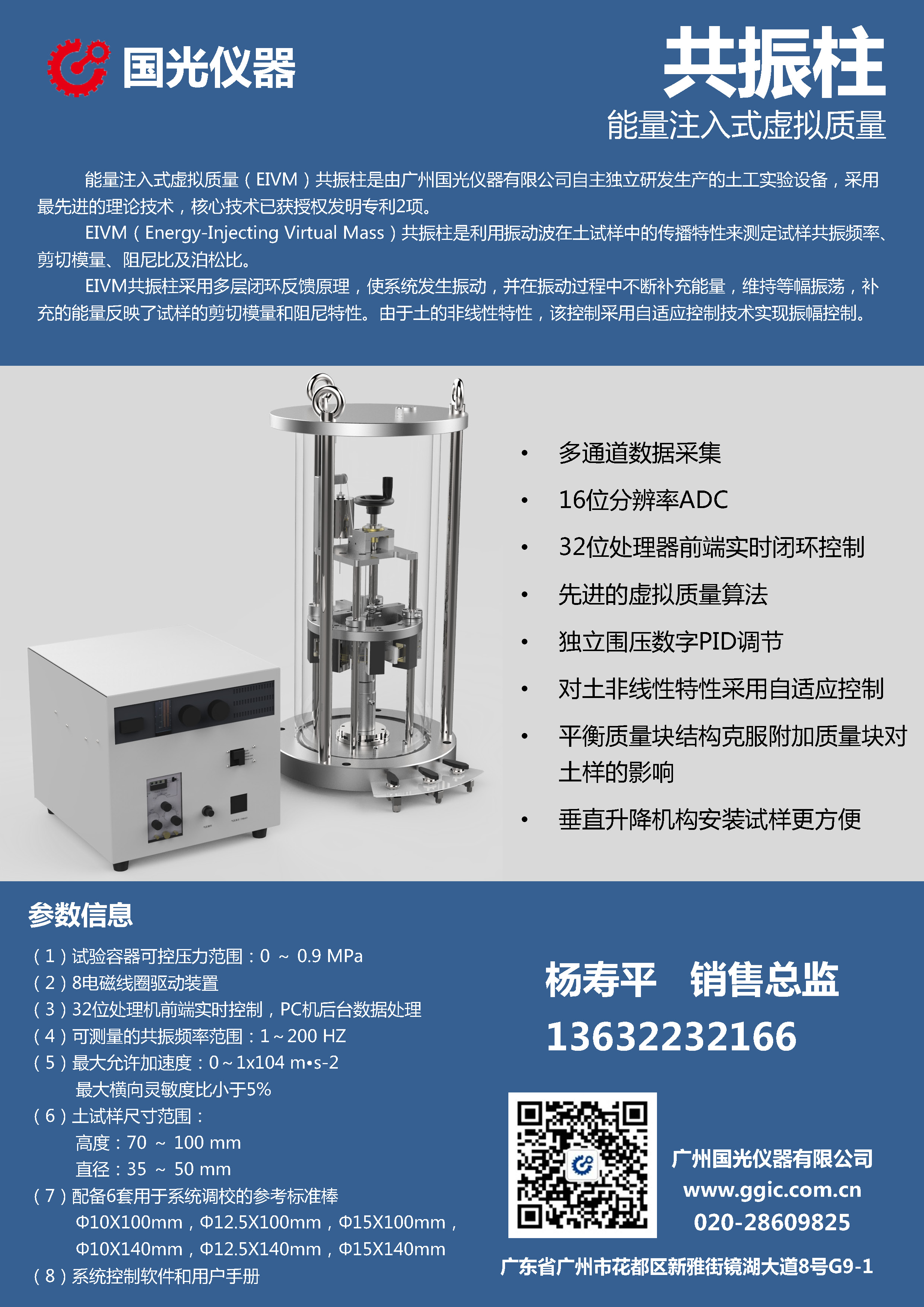
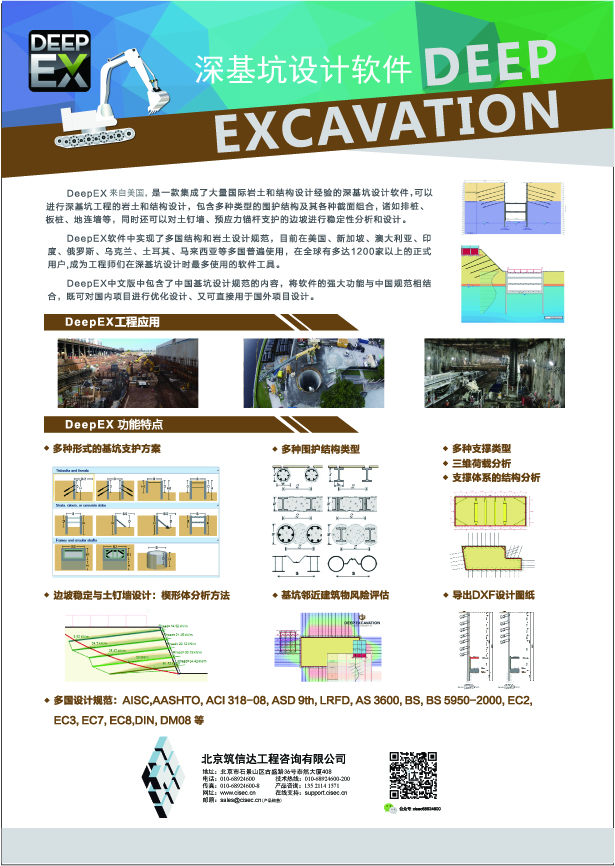
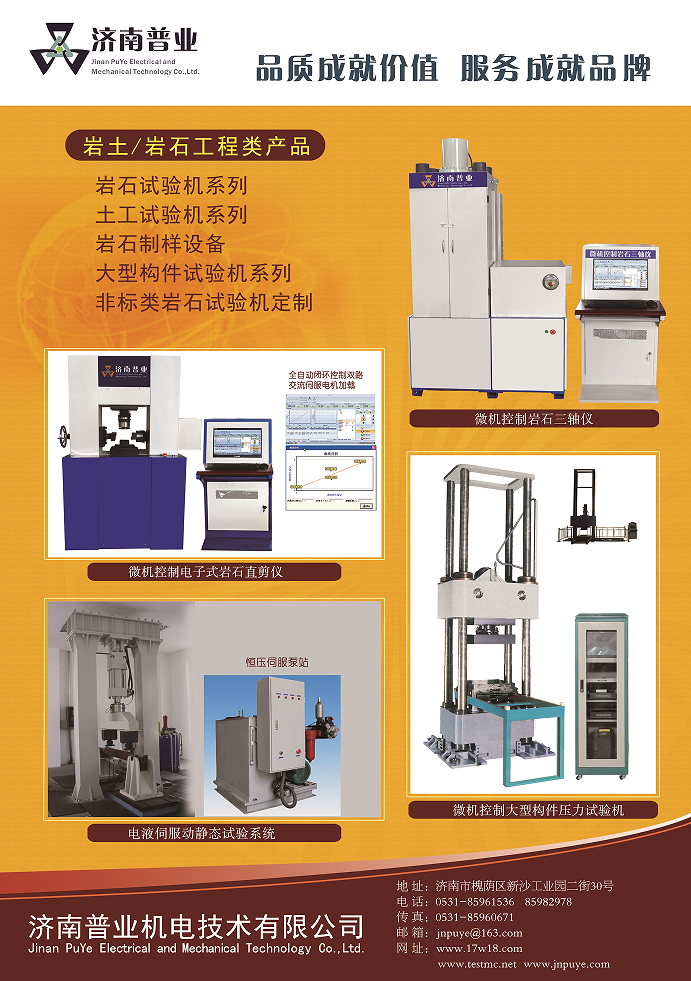
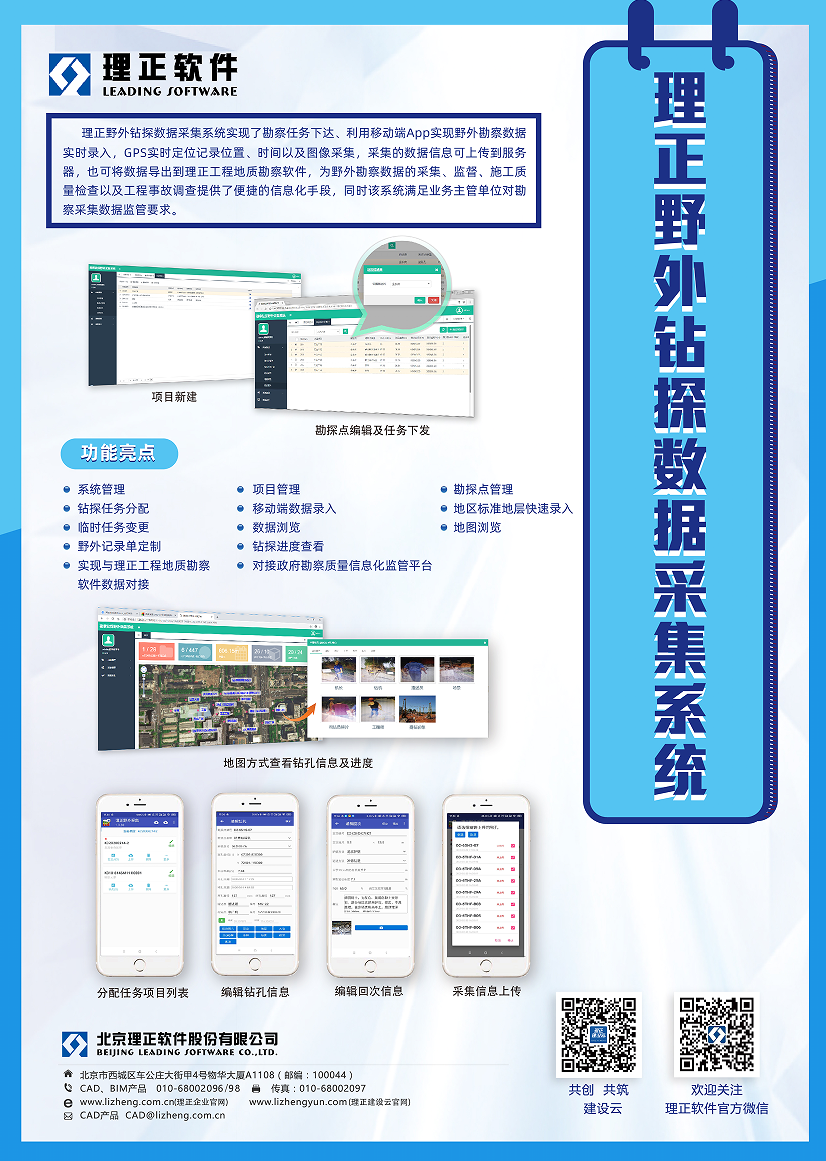
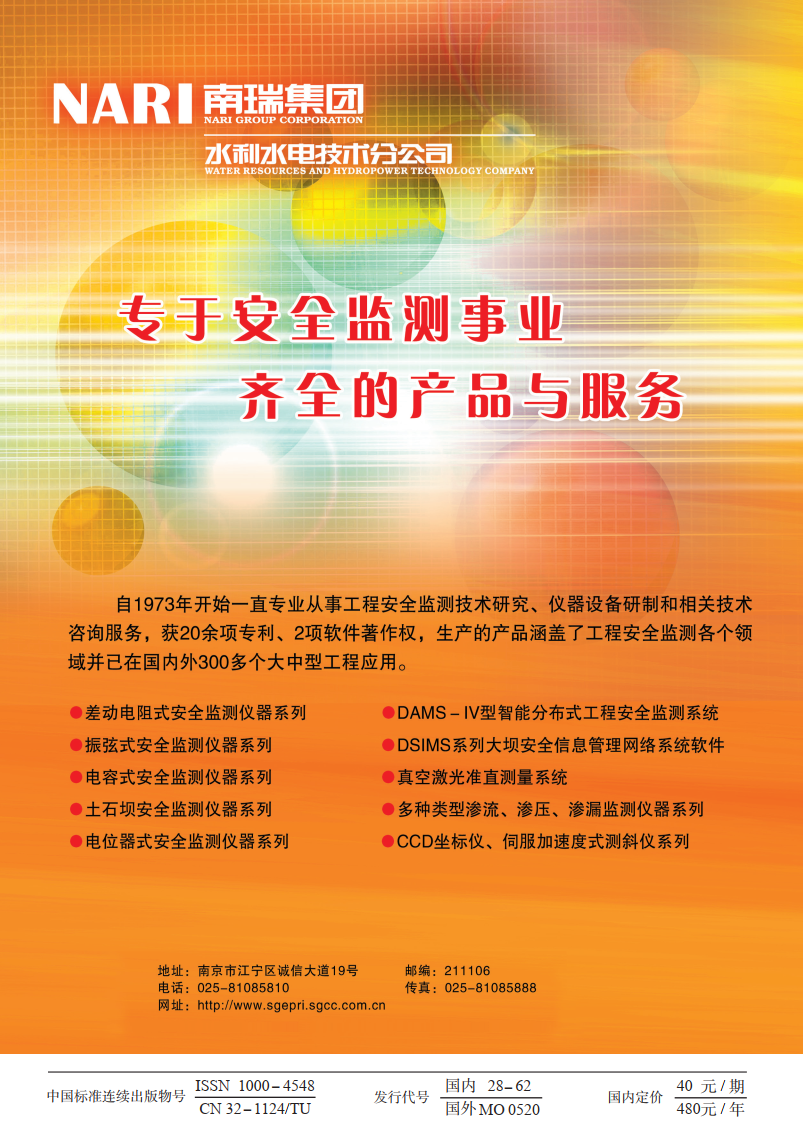
 下载:
下载:
